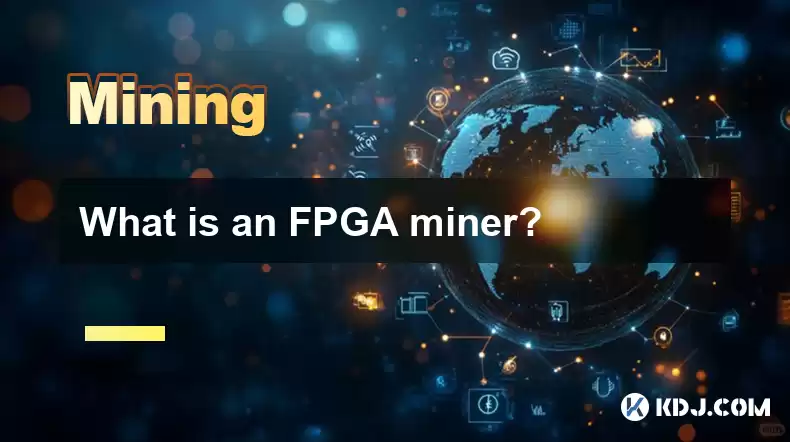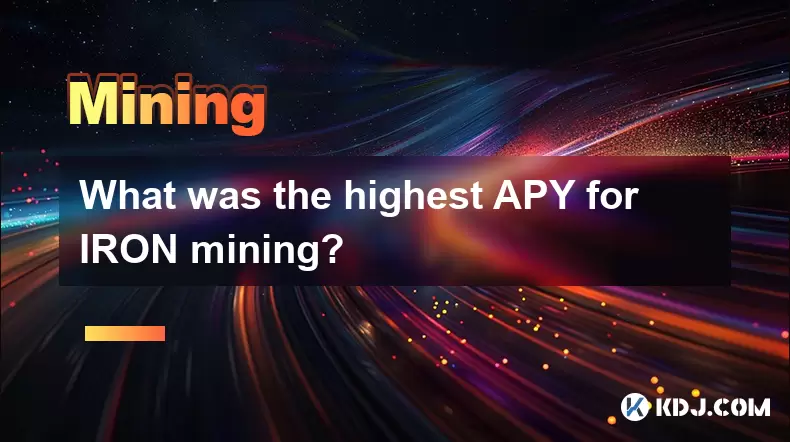-
 Bitcoin
Bitcoin $114400
0.68% -
 Ethereum
Ethereum $3550
2.48% -
 XRP
XRP $3.001
4.99% -
 Tether USDt
Tether USDt $0.9999
0.01% -
 BNB
BNB $757.6
1.46% -
 Solana
Solana $162.9
1.07% -
 USDC
USDC $0.9998
0.00% -
 TRON
TRON $0.3294
0.91% -
 Dogecoin
Dogecoin $0.2015
2.46% -
 Cardano
Cardano $0.7379
2.01% -
 Stellar
Stellar $0.4141
8.83% -
 Hyperliquid
Hyperliquid $37.83
-1.91% -
 Sui
Sui $3.454
0.76% -
 Chainlink
Chainlink $16.62
3.53% -
 Bitcoin Cash
Bitcoin Cash $554.6
2.84% -
 Hedera
Hedera $0.2486
3.91% -
 Ethena USDe
Ethena USDe $1.001
0.00% -
 Avalanche
Avalanche $21.95
3.34% -
 Toncoin
Toncoin $3.563
-2.85% -
 Litecoin
Litecoin $112.7
2.65% -
 UNUS SED LEO
UNUS SED LEO $8.977
0.13% -
 Shiba Inu
Shiba Inu $0.00001232
1.85% -
 Uniswap
Uniswap $9.319
2.93% -
 Polkadot
Polkadot $3.632
1.38% -
 Monero
Monero $307.2
2.36% -
 Dai
Dai $0.9997
-0.03% -
 Bitget Token
Bitget Token $4.340
0.91% -
 Pepe
Pepe $0.00001048
1.07% -
 Cronos
Cronos $0.1348
3.26% -
 Aave
Aave $261.5
1.93%
What is an FPGA miner?
FPGA miners offer reconfigurability and energy efficiency, allowing miners to adapt to different cryptocurrencies and algorithms, though they require technical expertise and have high initial costs.
Apr 16, 2025 at 05:56 am

An FPGA miner, or Field-Programmable Gate Array miner, is a type of hardware used for cryptocurrency mining that leverages the flexibility and efficiency of FPGAs. Unlike traditional ASIC (Application-Specific Integrated Circuit) miners, which are designed for a specific task and cannot be reprogrammed, FPGA miners offer the advantage of being reconfigurable. This means that they can be updated to mine different cryptocurrencies or adapt to changes in mining algorithms, making them a versatile choice for miners looking to stay ahead in the rapidly evolving world of cryptocurrency.
How FPGA Miners Work
FPGA miners operate by using a grid of programmable logic blocks that can be configured to perform specific tasks. In the context of cryptocurrency mining, these tasks typically involve solving complex mathematical problems to validate transactions and add them to the blockchain. The key to FPGA mining is the ability to program the FPGA to execute these tasks efficiently. This is done using hardware description languages (HDLs) such as Verilog or VHDL, which allow miners to tailor the FPGA's operations to the specific requirements of the cryptocurrency they are mining.
Advantages of FPGA Miners
One of the primary advantages of FPGA miners is their energy efficiency. Compared to GPUs (Graphics Processing Units) and CPUs (Central Processing Units), FPGAs consume less power while performing the same mining tasks. This can result in significant cost savings over time, especially for miners operating at scale. Additionally, the reprogrammability of FPGAs allows miners to switch between different cryptocurrencies without needing to purchase new hardware, providing a level of flexibility that is not available with ASIC miners.
Disadvantages of FPGA Miners
Despite their advantages, FPGA miners also have some drawbacks. The initial cost of FPGA hardware can be high, and the process of programming and optimizing an FPGA for mining can be complex and time-consuming. This requires a certain level of technical expertise, which may not be accessible to all miners. Furthermore, while FPGAs are more versatile than ASICs, they are generally less efficient in terms of hash rate per watt, which can be a disadvantage in highly competitive mining environments.
Setting Up an FPGA Miner
Setting up an FPGA miner involves several steps, each of which requires careful attention to detail. Here is a step-by-step guide to help you get started:
Choose the Right FPGA Board: Select an FPGA board that is suitable for mining. Popular choices include the Xilinx Zynq or the Intel Cyclone series. Consider factors such as power consumption, available resources, and compatibility with mining software.
Install the Necessary Software: You will need software to program and control your FPGA. This typically includes an Integrated Development Environment (IDE) such as Xilinx Vivado or Intel Quartus Prime, as well as mining software that is compatible with your chosen cryptocurrency.
Program the FPGA: Use the IDE to write and compile your mining algorithm in an HDL. This can be a complex process, and you may need to refer to existing open-source projects or seek guidance from experienced FPGA miners.
Connect to the Mining Pool: Once your FPGA is programmed, connect it to a mining pool. This involves setting up the necessary network connections and configuring the mining software to communicate with the pool's servers.
Monitor and Optimize: After your FPGA miner is up and running, monitor its performance and make adjustments as needed. This may involve tweaking the mining algorithm or adjusting the FPGA's settings to improve efficiency.
FPGA Miners vs. ASIC Miners
When comparing FPGA miners to ASIC miners, it's important to consider their respective strengths and weaknesses. ASIC miners are highly specialized and offer superior performance in terms of hash rate per watt, making them the preferred choice for miners focused on a single cryptocurrency. However, their lack of flexibility means that they can become obsolete if the mining algorithm changes or if the miner wants to switch to a different cryptocurrency. FPGA miners, on the other hand, offer a balance of performance and flexibility, making them a good choice for miners who value adaptability and energy efficiency.
FPGA Miners vs. GPU Miners
FPGA miners also differ from GPU miners in several key ways. GPUs are widely available and relatively easy to set up for mining, making them a popular choice for beginners. However, they are less energy-efficient than FPGAs and can be less effective at mining certain cryptocurrencies. FPGA miners, with their higher energy efficiency and reprogrammability, can offer better long-term value for miners willing to invest the time and effort to set them up correctly.
Real-World Applications of FPGA Miners
FPGA miners have been used successfully in various real-world applications within the cryptocurrency space. For example, some miners have used FPGAs to mine Bitcoin in its early days, taking advantage of their flexibility to adapt to changes in the mining algorithm. More recently, FPGAs have been used to mine altcoins that are less competitive and more suited to their capabilities. In some cases, miners have even developed custom mining algorithms for FPGAs to maximize their efficiency and profitability.
Frequently Asked Questions
Q: Can I use an FPGA miner to mine any cryptocurrency?
A: While FPGAs are versatile and can be programmed to mine different cryptocurrencies, not all cryptocurrencies are equally suited to FPGA mining. Some cryptocurrencies, especially those with ASIC-resistant algorithms, may be more effectively mined using GPUs or other hardware. It's important to research the specific cryptocurrency you are interested in mining to determine if an FPGA is the best choice.
Q: How long does it take to program an FPGA for mining?
A: The time it takes to program an FPGA for mining can vary widely depending on your level of experience and the complexity of the mining algorithm. For beginners, it may take several weeks to learn the necessary skills and develop a working mining algorithm. More experienced miners may be able to program an FPGA in a matter of days.
Q: Are FPGA miners profitable?
A: The profitability of FPGA miners depends on several factors, including the cost of electricity, the price of the cryptocurrency being mined, and the efficiency of the FPGA setup. In some cases, FPGA miners can be profitable, especially for mining less competitive cryptocurrencies. However, the initial investment and ongoing maintenance costs should be carefully considered before deciding to use an FPGA for mining.
Q: Can I use an existing FPGA design for mining?
A: Yes, there are open-source FPGA designs available that can be used as a starting point for mining. However, these designs may need to be modified and optimized for your specific hardware and the cryptocurrency you are mining. Using an existing design can save time and effort, but it's important to understand the underlying code and make any necessary adjustments to achieve optimal performance.
Disclaimer:info@kdj.com
The information provided is not trading advice. kdj.com does not assume any responsibility for any investments made based on the information provided in this article. Cryptocurrencies are highly volatile and it is highly recommended that you invest with caution after thorough research!
If you believe that the content used on this website infringes your copyright, please contact us immediately (info@kdj.com) and we will delete it promptly.
- Cryptocurrency, Altcoins, and Profit Potential: Navigating the Wild West
- 2025-08-04 14:50:11
- Blue Gold & Crypto: Investing Disruption in Precious Metals
- 2025-08-04 14:30:11
- Japan, Metaplanet, and Bitcoin Acquisition: A New Era of Corporate Treasury?
- 2025-08-04 14:30:11
- Coinbase's Buy Rating & Bitcoin's Bold Future: A Canaccord Genuity Perspective
- 2025-08-04 14:50:11
- Coinbase's Buy Rating Maintained by Rosenblatt Securities: A Deep Dive
- 2025-08-04 14:55:11
- Cryptos, Strategic Choices, High Returns: Navigating the Meme Coin Mania
- 2025-08-04 14:55:11
Related knowledge

What was the highest APY for IRON mining?
Jul 23,2025 at 05:14am
Understanding IRON Token and Its Mining MechanismThe IRON token is a stablecoin that operates within the Iron Finance ecosystem, primarily on blockcha...

What is impermanent loss in IRON pools?
Jul 23,2025 at 09:00am
Understanding Impermanent Loss in the Context of IRON PoolsImpermanent loss is a phenomenon that affects liquidity providers in decentralized finance ...

How to claim rewards from IRON mining?
Jul 23,2025 at 02:21pm
Understanding IRON Mining and Reward MechanismsIRON Finance operated as a decentralized finance (DeFi) protocol on the Polygon and Binance Smart Chain...

How to claim rewards from IRON mining?
Jul 29,2025 at 05:07am
Understanding IRON Mining and Reward MechanismIRON is a dual-token system designed to stabilize the value of a synthetic asset through a combination o...

IRON mining tutorial for beginners
Jul 27,2025 at 12:01am
What Is IRON and How Does It Work in the Cryptocurrency Ecosystem?IRON is a cryptocurrency token that operates on the Binance Smart Chain (BSC) and is...

How to calculate APY for IRON mining?
Jul 28,2025 at 09:49am
Understanding APY in the Context of IRON Token MiningWhen engaging in IRON token mining within decentralized finance (DeFi) platforms, Annual Percenta...

What was the highest APY for IRON mining?
Jul 23,2025 at 05:14am
Understanding IRON Token and Its Mining MechanismThe IRON token is a stablecoin that operates within the Iron Finance ecosystem, primarily on blockcha...

What is impermanent loss in IRON pools?
Jul 23,2025 at 09:00am
Understanding Impermanent Loss in the Context of IRON PoolsImpermanent loss is a phenomenon that affects liquidity providers in decentralized finance ...

How to claim rewards from IRON mining?
Jul 23,2025 at 02:21pm
Understanding IRON Mining and Reward MechanismsIRON Finance operated as a decentralized finance (DeFi) protocol on the Polygon and Binance Smart Chain...

How to claim rewards from IRON mining?
Jul 29,2025 at 05:07am
Understanding IRON Mining and Reward MechanismIRON is a dual-token system designed to stabilize the value of a synthetic asset through a combination o...

IRON mining tutorial for beginners
Jul 27,2025 at 12:01am
What Is IRON and How Does It Work in the Cryptocurrency Ecosystem?IRON is a cryptocurrency token that operates on the Binance Smart Chain (BSC) and is...

How to calculate APY for IRON mining?
Jul 28,2025 at 09:49am
Understanding APY in the Context of IRON Token MiningWhen engaging in IRON token mining within decentralized finance (DeFi) platforms, Annual Percenta...
See all articles

























































































